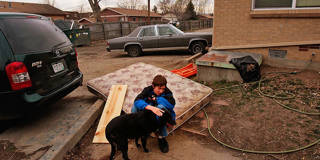
Housing Bubble Déjà Vu
The 2008 crisis exposed a serious weakness in the global financial system’s architecture: the overnight market for mortgage-backed securities. Some nine years later, that weakness has not been addressed adequately.

The 2008 crisis exposed a serious weakness in the global financial system’s architecture: the overnight market for mortgage-backed securities. Some nine years later, that weakness has not been addressed adequately.
CAMBRIDGE – The 2008-2009 financial crisis exposed a serious weakness in the global financial system’s architecture: an overnight market for mortgage-backed securities that could not handle the implosion of a housing bubble. Some nine years later, that weakness has not been addressed adequately.